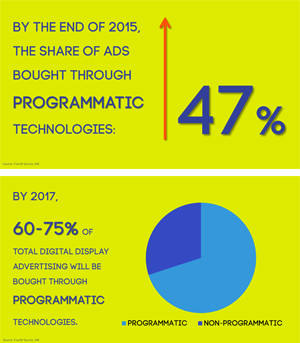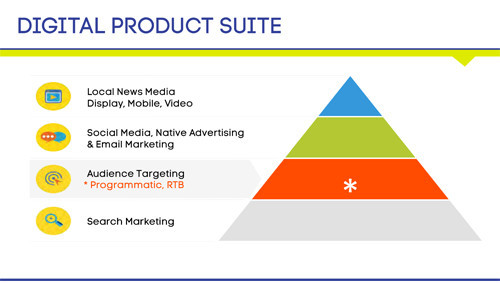Tackling the beast of programmatic buying

Programmatic and real time bidding (a subset of programmatic buying where ad space is bought and sold through an auction) is expected to be a $20 billion market by 2017 – an opportunity for newspapers that speaks for itself, AdTaxi President Kirk MacDonald told attendees at the Key Executives Mega-Conference.
With all of the tools available for companies and business to utilize today, accepting "no" as an answer should never be an option, he said. "There should never be a reason to take a no with all you have to sell today."
"I will tell you," MacDonald said, "if you don't get really good at this (programmatic and real-time bidding) within the next three years, you will be throwing money back at the market."
He told publishers who don't grab this opportunity that they will become frustrated with their ad departments, digital departments and at their growth rates.
"Basically, programmatic is automated digital advertising buying," MacDonald said. "The digital ad impression goes into a repository, bought and sold and optimized in an automated environment and then served in either desktop or mobile via banner or video."
MacDonald noted the transition from print to digital advertising has not been a clear or simple process, but pushing beyond the newspaper's designated market opens new windows for revenue.
"This is where the biggest stream of revenue is playing out as we speak today," he said. "It is really significant."
He outlined the benefits of demand-side buying versus supply-side buying, and detailed his preference of demand-side for two reasons.
"One, because we all have limited supply on our newspaper sites, and two is because there is unlimited ad inventory on the demand side," he said. "Typically you also can resell for higher CPMs in the local marketplaces on the demand side than you can on the supply side."
The programmatic process may be automated, but requires a human touch to manage campaigns and for optimization, he said.
Citing machine automation versus human control, he said, "Lots of people think that you can just automate the demand-side buying and that computers will do it all and off we go," he said. "Not true at all. It's a combination."
Throughout the session, MacDonald emphasized two key factors: (1) the importance of training a sales division to effectively sell video and mobile programmatically, and (2) the belief that out-of-network offers the best chance for digital revenue growth.
"Learning to sell off site and keeping the revenue inside your newspaper, in my opinion, is the strategy to accelerate digital growth," he said.
MacDonald suggested a four-tier pyramid approach to selling advertising. He recommended first selling local inventory: video, mobile and display. Second: sell email, social media and native advertising. The third tier involves programmatic audience targeting. Lastly, sell search marketing.

"That is the product speed, put very simply, that sales people have to be trained on and the sales force has to be mobilized on in order to maximize your digital revenue," he said.
MacDonald said this is an exciting time to be selling media. And with the limitless nature of the digital world, there are countless platforms.
"You have never had more to sell. You have never been able to pull more product out of your tool kit. You have never been able to offer an advertiser as much in terms of value," he said.
Collette Richards is a journalism student at Georgia State University, who assisted the Southern Newspaper Publishers Association in covering the Mega-Conference.





